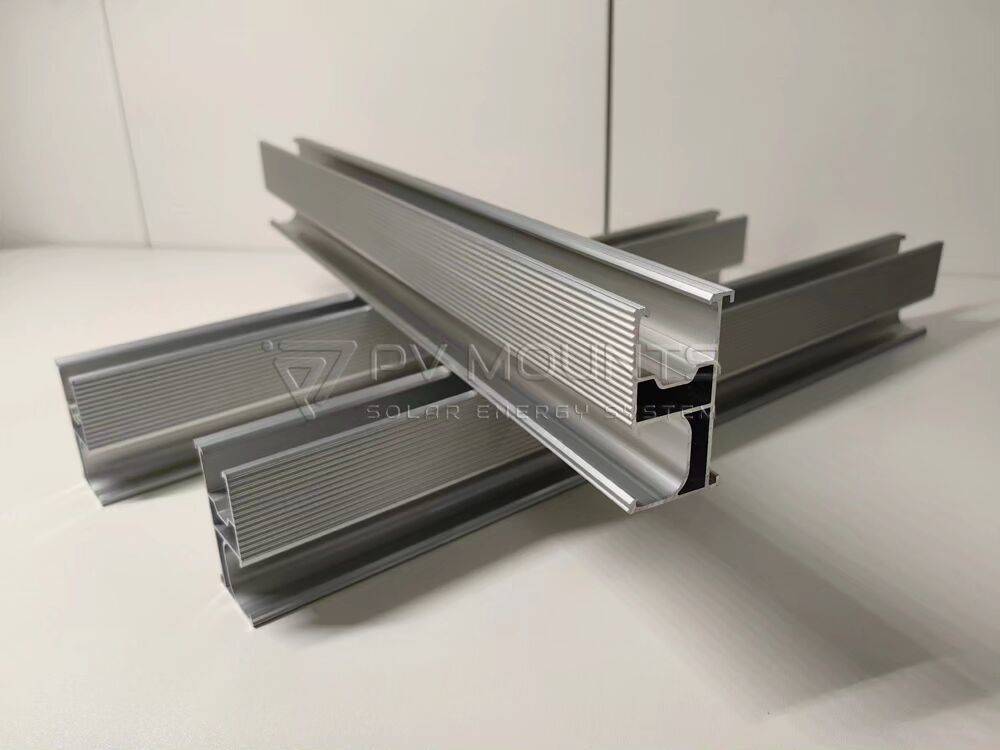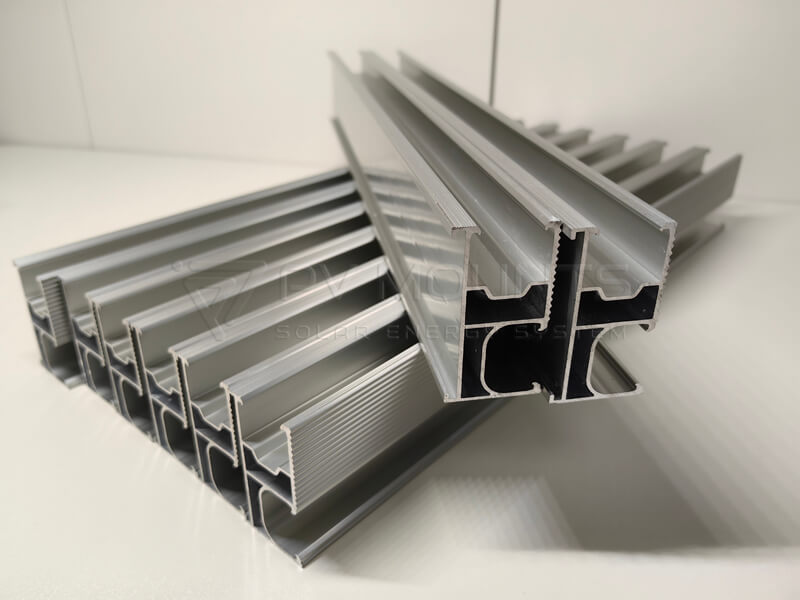Galvanic corrosion is not just a significant issue, but a potential threat that can undermine the structural integrity and efficiency of solar mounting systems. This type of corrosion occurs when two dissimilar metals, such as stainless steel 304 and aluminum alloy, are in electrical contact within an electrolytic environment, typically facilitated by moisture. Given the rising adoption of solar energy, understanding the dynamics of galvanic corrosion and implementing preventive measures is not just critical, but urgent for maintaining the reliability and longevity of solar installations.
Table of Contents
Understanding Materials: Stainless Steel 304 and Aluminum Alloy
Stainless Steel 304
a material widely celebrated for its excellent corrosion resistance and durability, is a key player in various applications. It contains chromium, a component that forms a protective layer of chromium oxide on the surface, effectively shielding the internal structures from rust and degradation. This unique characteristic makes it a popular choice in environments where exposure to moisture and corrosive elements is a common occurrence

Properties of Aluminum Alloy
Aluminum alloy, another key player in solar mounting systems, is prized for its lightweight nature and cost-effectiveness. However, it is more susceptible to corrosion, especially when in contact with more noble metals like stainless steel. Aluminum’s tendency to rust is due to its anodic nature in the galvanic series, which means it can deteriorate quickly if proper precautions are not taken.

Mechanics of Galvanic Corrosion
Understanding the process of galvanic corrosion is the first step towards preventing it. This phenomenon is driven by the electrochemical potential differences between two dissimilar metals. When stainless steel 304 and aluminum alloy are used together, aluminum, being the more anodic material, acts as the sacrificial anode and corrodes at a faster rate than it would independently, while stainless steel acts as the cathode and corrodes less. This interaction can significantly impact the performance and lifespan of solar mounting systems, making it a crucial aspect to consider in their design and maintenance.
How Galvanic Corrosion Occurs
The process begins when the metals are in contact with the presence of an electrolyte, which can be any conductive fluid, commonly water. The electrical connection and the presence of an electrolyte enable the flow of electrons from the anodic material (aluminum) to the cathodic material (stainless steel), leading to material degradation at the anode.
Factors Influencing Corrosion Rates
Several factors can influence the rate at which galvanic corrosion occurs, including the electrical conductivity of the electrolyte, the relative sizes of the anodic and cathodic areas, and the distance between the metals. Environmental factors such as temperature, humidity, and the presence of salts can also exacerbate the corrosion process. For instance, high temperatures can accelerate the corrosion process, while high humidity can enhance moisture presence, facilitating the electrolyte’s formation and sustaining the galvanic action. Similarly, the presence of salts, especially in coastal areas, can increase the electrical conductivity of the electrolyte, leading to faster corrosion.
Impact of Environment on Corrosion
The environment plays a crucial role in the severity and speed of galvanic corrosion. Different climates can drastically alter the conditions under which solar mounting systems operate, thereby affecting their susceptibility to corrosion.
Role of Environmental Conditions
Coastal areas, for example, can accelerate corrosion due to high salinity, which increases the conductivity of the electrolyte. Similarly, high humidity areas enhance moisture presence, facilitating the electrolyte’s formation and sustaining the galvanic action.
Preventive Measures for Different Climates
To combat these challenges, it is essential to consider environmental factors in the design and maintenance of solar mounting systems. Implementing drainage systems to remove water, using corrosion-resistant materials, and applying protective coatings are vital strategies. Additionally, regular inspections can help identify and mitigate early signs of corrosion, thus prolonging the system’s life and functionality.
By understanding the materials involved, the mechanics of their interaction, and the environmental impacts, you, as stakeholders, can effectively strategize to prevent galvanic corrosion. Your role in this process is crucial, ensuring the durability and efficiency of solar mounting systems.
Preventive Strategies and Best Practices
To mitigate the potentially severe risks associated with galvanic corrosion between stainless steel 304 and aluminum alloy in solar mounting systems, it is essential to employ a combination of design modifications, material selection, and preventative maintenance strategies. These best practices not only extend the lifespan of the solar installations but also enhance their overall performance.
Material Selection and Design Considerations
Choosing the right materials is crucial. Opt for metals close in the galvanic series to minimize potential differences and reduce the corrosion rate. Design modifications can include isolating metals from direct contact through the use of non-conductive barriers or washers, and designing joints to minimize water retention.
Protective Coatings and Treatments
Applying protective coatings such as paints, powder coatings, or anodic protection can effectively shield the more vulnerable metal from the electrolyte. Treatments like anodizing aluminum can enhance its surface resistance to corrosion, making it more durable in adverse conditions.
Case Studies: Real-world Applications
Examining both successful and unsuccessful installations helps highlight the practical applications of theory and the importance of adhering to best practices in preventing galvanic corrosion.
Analysis of Successful Installations
Case studies where stainless steel 304 and aluminum alloy were used without significant corrosion issues typically involve meticulous design and preventive measures. These success stories should reassure you about the effectiveness of the strategies we are discussing, such as using epoxy coatings and rubber gaskets to prevent direct metal contact and moisture ingress.
Lessons Learned from Failure Cases
In contrast, failure cases often neglect one or more preventive measures. A notable case involved a solar installation near the ocean. The lack of protective coatings and poor material choice led to severe corrosion, significantly reducing the system’s operational life and increasing maintenance costs.
Innovations in Corrosion Prevention
Advances in materials science and engineering continue to introduce innovative solutions to combat galvanic corrosion, particularly in solar mounting systems.
Recent Advances in Material Science
New alloys and composite materials that are more resistant to corrosion are being developed. These materials offer better performance without the need for extensive protective measures, thereby reducing costs and complexity in solar system designs.
Emerging Technologies in Corrosion Prevention
Technological innovations such as smart coatings, which can heal themselves or signal corrosion at early stages, and cathodic protection systems, which use electrical currents to reduce the electrochemical potential of the anodic material, are becoming more prevalent.
Maintaining Solar Mounting Systems
Regular maintenance is crucial for prolonging the life of solar mounting systems and ensuring they continue to operate efficiently. Maintenance protocols must be tailored to the specific needs of the system, considering the materials used and the local environmental conditions.
Routine Inspection and Maintenance Protocols
Regular inspections can detect early signs of galvanic corrosion. These should include visual checks, measurements of metal thickness, and the integrity of protective coatings. Maintenance might involve cleaning, reapplying protective layers, and replacing any components showing signs of degradation.
Long-term Sustainability Practices
Sustainable practices involve selecting materials not only based on cost and functionality but also on their environmental impact and longevity. Implementing a sustainability-focused approach can lead to more durable and environmentally friendly solar mounting systems.
By integrating these strategies, stakeholders can effectively manage and mitigate the risks of galvanic corrosion, ensuring the robustness and sustainability of solar mounting systems. This proactive approach not only saves costs in the long run but also contributes to the reliability and efficiency of renewable energy infrastructures.
Galvanic Corrosion Between Stainless Steel 304 and Aluminum Alloy
This section delves into the specific interactions between stainless steel 304 and aluminum alloy within solar mounting systems, providing a detailed analysis of the corrosion mechanisms and strategies for effective management.
Detailed Analysis of Interactions
When stainless steel 304 and aluminum alloy are used together in the presence of an electrolyte, a galvanic cell is formed. Stainless steel, being less reactive, acts as the cathode and is protected; meanwhile, aluminum, being more reactive, acts as the anode and corrodes. This interaction is exacerbated in environments with high moisture or saline content.
Conclusion: Future Directions and Summary
The management of galvanic corrosion between stainless steel 304 and aluminum alloy in solar mounting systems represents a critical aspect of sustainable infrastructure development. As technologies advance and more is understood about material interactions, strategies for preventing and mitigating corrosion will improve. By adopting the outlined practices and staying informed through continuous education and consultation, stakeholders can ensure that their solar installations remain effective and durable, contributing to the broader goal of reliable and efficient renewable energy solutions.
















